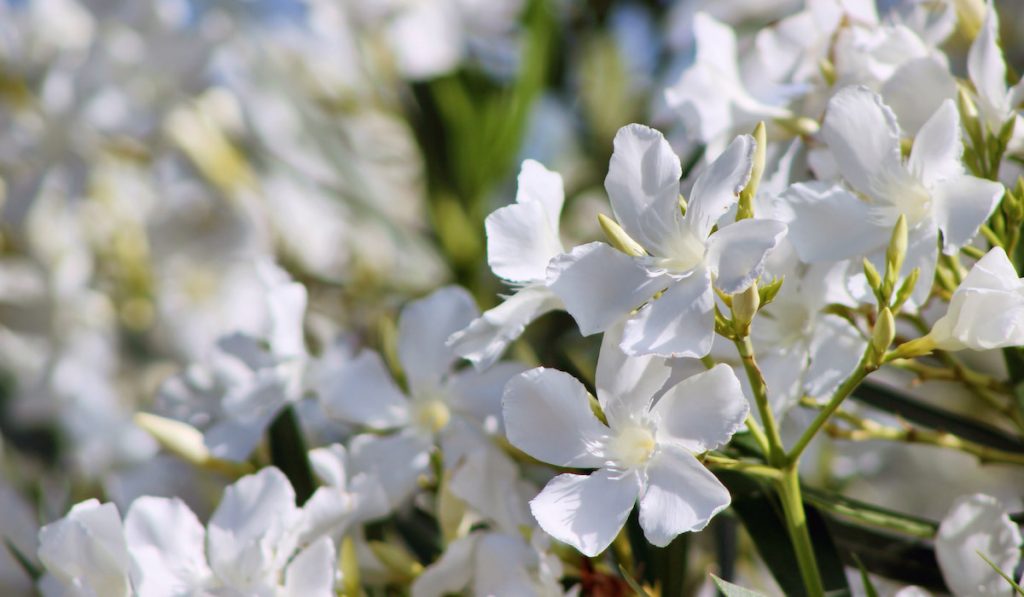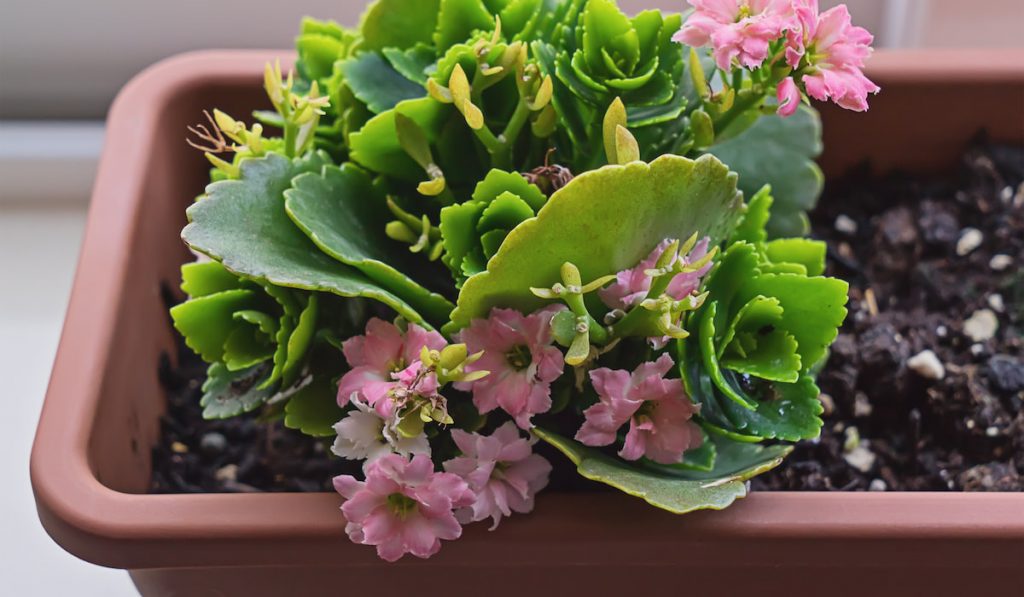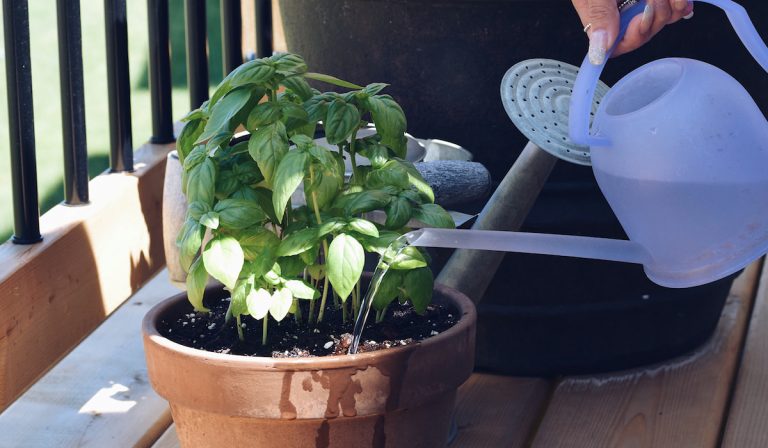17 Flowers That Bloom All Year in Florida
Various factors contribute to the bloom pattern of flowers. So while some bloom all year, some only bloom seasonally.
You may think, “why would anyone want flowers that bloom all year?” The advantage of having flowers that bloom all year is that your garden will maintain its attractiveness year-round.
The unique climatic variation in Florida might leave you unsure of the flowers to plant in your garden. But not to worry, we’ve got your back on this one. If you want flowers that bloom all year in Florida, try the following:
Table of Contents
1. Begonia

Begonias are easy to grow. This family of flowering plants contains about 1300 species, with some that bloom all year.
Begonias are richly colored. Hence, their popularity. They come in three main groups: wax begonia, rhizomatous begonia, and cane begonia.
There are other groups, but these three are the best for landscapes. The other varieties do well as houseplants but do not thrive in a landscape environment.
Begonias bloom brightly-colored single or double flowers measuring 1.5 inches. The flowers can be white, pink, or red.
The best type of soil for begonias is light, rich, slightly acidic, and well-drained. Most of them prefer short exposure to bright light. They tolerate more sun than usual when in cooler regions.
Begonias are best grown in hardiness zone 6 to 9.
2. Hibiscus

It is never hard to notice the flowers of a hibiscus plant. While the plant is tropical, it thrives in Florida, especially in South Florida.
The blooms of hibiscus are generally bell-shaped. Their form could be single, double, smooth, or scalloped with varying colors. Some of the colors of a hibiscus flower are red, yellow, orange, white, multicolor, and pink.
Besides blooming all year, hibiscus plants have evergreen foliage. So the changes in your garden year-round will not be too significant. Hibiscus grows as a shrub, reaching heights of up to 15 feet when fully grown.
Hibiscus is best cultivated in well-drained soil with a pH between 6.5 and 6.8. They do well in full or partial sun and are suited for hardiness zones 5-9.
3. Lantana

Lantana can be grown as an annual plant or a perennial. It is a hardy plant – low-maintenance, drought-tolerant, heat-tolerant, and salt-tolerant.
Lantana plants bloom a cluster of small flowers that come in various bright colors. Some of these colors are red, orange, yellow, multicolor, cream, and lavender. Lantana grows as a shrub with toothed green foliage that can be as tall as 2-6 feet. As an annual, lantana reaches around 3-4 feet.
Besides the shrub variety, trailing lantanas also exist. These types are an appealing option for hanging baskets.
Lantanas also attract butterflies, bees, and hummingbirds. As we said, they are low-maintenance, so you need not put too much effort into the soil you plant them in.
Nonetheless, lantanas prefer well-drained, loose soil with a pH of 6.5-7.5. The soil should be of at least average fertility. But this may not even matter as lantanas will survive in infertile soil.
Lantana grows in USDA hardiness zone 8-11.
4. Mexican Heather

You get to have tiny purple, red, or white flowers from your Mexican Heathers all year round. Mexican Heathers are evergreen plants with dark-green foliage.
They typically grow as dense shrubs that reach heights of around 12-24 inches. With that height range, they would fit perfectly into borders and walkway plantings. If you grow them in a container, they will also do well.
Besides staying beautiful, Mexican Heathers can attract butterflies. You get more than just beautiful flowers with them.
Mexican Heathers are relatively hardy, and they grow well in partial shade or full sun. They prefer rich, well-drained soil with a slightly acidic pH (5.5-7).
Mexican Heathers are best grown in hardiness zone 9 to 11.
5. Gerbera

In most parts of the country, Gerbera only grows as an annual. But fortunately, in Florida, it thrives as a perennial too.
Gerberas are daisies with large flowers. The flowers sometimes measure 3-4 inches and are colored red, white, orange, pink, or yellow.
Gerberas are related to sunflowers. You can even tell from the similarities in their flowers. Gerberas come with long fuzzy leaves, which offer bold texture when used in mixed beds, borders, containers, or walkways.
They thrive in locations with partial sun or full sun, and they need well-drained, rich soil. They prefer slightly acidic soil – between 5.5 and 6.5. Gerberas are best grown in USDA hardiness zone 8-11.
6. Plumbago

Plumbagos offer an ever-present blue hue to your garden. Plumbagos are shrubs with yellowish-green plumage that grow as tall as 6-10 feet with a spread of 8-10 feet.
Besides the blue blooming cultivars, some other cultivars produce dark cobalt-blue and white blooms. Plumbagos form rounded mounds about 3-10 feet wide and tall. This makes them perfect for formal hedges, informal hedges, and borders.
You may also grow them in mixed beds, containers, and foundation planting. They grow best in full sun, well-drained acidic sandy soil. It may tolerate shade, but the bloom may not be as great.
Plumbagos thrive in USDA zone 5 to 9.
7. Ixora

Ixora may also be referred to as Jungle Flames. It is a plant with dense evergreen foliage and collections of small flowers. The cluster may span around 2-5 inches with red, pink, or yellow flowers.
Ixoras grow as trees or shrubs with heights of around 4 to 6 feet. They find applications as screens, hedges, border linings, walkway linings, mixed beds, and foundation plants.
Ixora plants prefer well-drained, slightly acidic soil. The pH might be vital since some Ixora plants develop chlorosis in alkaline soils. They bloom best in full, direct sun. But in the hottest zones, partial shade will do.
Ixora is suited for USDA hardiness zone 9-11.
8. Pentas

Pentas also goes by the name Starflower, a name it gets for its star-shaped flower clusters. Pentas grow fuzzy dark-green foliage and flowers in various colors. The flowers may be pink, red, purple, two-toned, or white.
Pentas attract butterflies and hummingbirds. They grow as tall as 3-6 feet, although it all depends on the variety you get. They are not fast growers, so it may take time to reach their peak height.
Pentas can be used in borders, mass plantings, mixed beds, or containers. They thrive and bloom better in warm temperatures, so be sure to place them in locations with some warmth and direct sunlight.
Pentas prefer soil with good drainage and a pH of around 6. They are well-suited for hardiness zone 10 and higher.
9. Firespike
Firespike is a perennial herb that blooms all year round. It typically produced red, spiky flowers, hence, the name.
Firespikes can grow up to 6 feet tall. Their branches are upright and stiff, and they have shiny green foliage. Besides being a visual attraction, Firespikes can attract hummingbirds and butterflies.
There are not many flowering plants that thrive in partial shade. But Firespike is one of the exceptions.
Firespike prefers rich, moist soil with proper drainage. The soil’s pH should be around neutral to slightly acidic. Think of hardiness zone 10 to 11 when planting Firespikes.
10. Oleander

Oleanders might be toxic, but the beauty they bring to your landscape is everything. Their rapid growth rate is one reason people love them.
But beyond that, they bloom through most of the year. Oleander flowers are either single or double blossoms colored white, red, pink, yellow, or coral.
Oleanders are not choosy with soil. They do well in sandy soil, loam, and sometimes, even heavy clay.
As long as the pH is neutral or near-neutral, they will adjust to the soil. Oleanders can even tolerate drought and salt to an extent. This is one very hardy shrub.
Oleanders are best planted in full sun. But even in partial shade, they will thrive. If planted in partial shade, oleanders may not bloom as prolifically as they will in full sun. They may also not have as much vigor.
Oleanders are not tolerant to frost. They are best grown as perennials in hardiness zone 8-10.
11. Blue Daze

Another flowering plant that blooms all year is the Blue Daze. They can be grown in the ground or in containers, and you will still get the beautiful blooms.
Blue Daze produces bright blue flowers with a size of about 1 inch. The plant is tolerant to humidity and heat, making Floridian weather suitable.
Blue Daze is a low-growing plant and an evergreen perennial that does not like cold temperatures. So, you should not expect it to do well in North Florida.
Blue Daze will grow well in full sun. It is best grown in mildly acidic, sandy soil, which should be moist, but not wet.
Blue Dazes do well in hardiness zones 9 to 11.
12. Star Jasmine

Star Jasmines are vines that blossom with stellar white flowers all year round. Beyond the flowers, star jasmines are very fragrant.
While they are native to Japan and China, they thrive in the southern USA too. So growing them in Florida will be no problem.
Once fully grown, star jasmines may be as tall as 3-6 feet. They also have a spread within the same range.
Star jasmines are perfect as climbing decorations and ground covers. They are low-maintenance, and they can be planted at any time using cuttings from any other healthy star jasmine.
This vine prefers full sun. But even in full shade or partial shade, they may thrive.
Star jasmines would grow in various types of soils, whether slightly acidic or slightly alkaline. When planting star jasmines as ground cover, ensure a space of about 5 feet between the plants.
Star jasmines are best grown in USDA hardiness zone 8-10.
13. Spurred Butterfly-Pea
Spurred Butterfly-Pea grows as a vine – it can be climbing or trailing. It blooms butterfly-shaped flowers, and the upper petals look like spurred wings, hence, the name.
Spurred butterfly-pea is propagated from either seeds or cuttings. It thrives in various regions but if you want year-round blooms, plant them in South Florida.
Spurred butterfly-peas prefer well-drained sandy soil with a pH between slightly acidic, neutral, or slightly alkaline. They bloom best in full sun but would still thrive in minimal shade. Spurred butterfly-pea thrives best in zones 7 to 10.
14. Bulbine
Bulbines are easy to grow, drought-tolerant, and require minimal care. In warm regions, they bloom all year with stellar orange or yellow flowers.
South Florida and Central Florida offer the best conditions to grow them. Bulbines can be used as accents in mixed containers and flower beds.
Bulbines would do well in various types of soil, even dry ones. They prefer full sun, but minimal shade is fine too. Bulbines are only tolerant of drought once established. So at the start, plant them in soil with proper drainage and water regularly.
While they might be drought-tolerant when established, you would do well to offer some supplemental watering. Bulbines grow in hardiness zone 9 to 11.
15. Kalanchoe

Kalanchoes are perennial succulents that grow up to 12 inches in height and width. They bloom flowers of various colors, including yellow, magenta, pink, red, and orange.
Kalanchoes are easy to grow, and they can be cultivated from stem cuttings or leaves. They are drought-tolerant but may be affected by pests like aphids and mealybugs.
Insecticide treatment may help with these pests. But you may try milder options before opting for that.
For Kalanchoes to thrive, provide a well-drained, slightly acidic soil. A pH of 6-6.5 would do. Kalanchoes prefer filtered sun but full sun is also tolerable. Also, do not forget to water the plant when the soil’s surface becomes dry to touch.
Kalanchoes are suited for hardiness zones 10-12.
16. Aster
Aster is a perennial plant with various species that bloom at different times of the year. So through a careful combination of different species, you can get flowers all year in your garden.

For example, Climbing Aster blooms through winter, Snow Flurry blooms through fall, and Alpine Aster blooms from spring to summer. Considering that there are around 200 varieties, you can make any combination that suits your taste.
Across the approximately 200 cultivars of asters, heights range from a mere few inches to almost 12 feet. They bloom flowers of various colors, including red, blue, purple, pink, yellow, and white.
Asters are part of the daisy family, and they bloom star-shaped flowers. They grow best in well-drained loam soil but do not do well in sandy soil.
Most aster cultivars prefer full sun, but some are okay with partial shade. However, in partial shade, there are fewer blooms.
Asters thrive in hardiness zones 3 to 8.
17. Rose

Roses can be grown all year in all of Florida, except North Florida. In North Florida, roses are best planted in early spring.
They also bloom year-round in most of the state. But in North Florida, they may bloom for just about 9 months or more.
Roses are available in 2 varieties: low-maintenance and high-maintenance. Of course, the low-maintenance variants require less care.
On the other hand, the high-maintenance variants require more attention but reward you with spectacular blooms. Your choice between both should depend on how much care you can offer.
Shrub roses and old garden roses are examples of low-maintenance roses. Hybrid tea and polyantha roses are high-maintenance types.
One significant difference between both rose variants is their bloom. The low-maintenance have informal open blossoms. Contrarily, those of the high-maintenance variants are more formal.
Resources
- https://www.gardenloversclub.com/plant-finder/perennials/florida/
- https://www.flgardening.com/flowers-that-bloom-year-round-in-florida/
- https://dengarden.com/gardening/Flowers-and-Seasons
- https://edis.ifas.ufl.edu/ep339
- https://indiagardening.com/featured/flowers-that-bloom-all-year-round-permanent-flowering-plants/
- https://sfyl.ifas.ufl.edu/lawn-and-garden/growing-roses/
- https://www.gardenia.net/plant-variety/gaillardia-blanket-flower
- https://www.pennington.com/all-products/fertilizer/resources/secrets-to-growing-vibrant-hibiscus
- https://www.gardendesign.com/perennials/lantana.html
- https://www.wilsonbrosgardens.com/how-to-plant-prune-fertilize-water-hardy-lantana-plants.html
- https://homeguides.sfgate.com/prepare-soil-plant-lantana-68603.html
- http://www.public.asu.edu/~camartin/plants/Plant%20html%20files/cupheahybrid.html
- https://www.gardeningknowhow.com/ornamental/groundcover/false-heather/growing-mexican-heather-plants.htm
- https://www.sundaygardener.net/essential-care-for-gerbera-daisies
- https://www.thespruce.com/gerber-daises-4121360
- https://www.orlandosentinel.com/news/os-xpm-2009-01-04-profile0109-story.html
- https://www.joyusgarden.com/flowering-kalanchoes/
- https://www.growertalks.com/Article/?articleid=22539
- https://www.thespruce.com/growing-kalanchoe-plants-1902982
- https://www.gardeningknowhow.com/ornamental/shrubs/ixora/growing-ixora-shrubs.htm
- https://homeguides.sfgate.com/care-ixora-plant-39640.html
- https://www.trees.com/flowers/pentas-plant
- https://www.thespruce.com/pentas-flowers-1315713
- https://sfyl.ifas.ufl.edu/media/sfylifasufledu/baker/docs/pdf/horticulture/demonstration-gardens/Firespike.pdf
- https://www.gardeningknowhow.com/ornamental/shrubs/firespike/firespike-plant-information.htm
- https://www.thespruce.com/how-to-grow-firespike-plants-5076290
- https://homeguides.sfgate.com/mean-leaves-vinca-flowers-turn-yellow-73883.html
- http://www.missouribotanicalgarden.org/PlantFinder/PlantFinderDetails.aspx?taxonid=276113
- https://www.selectseeds.com/annual-plants/evolvulus_blue_daze_plants.aspx
- https://davesgarden.com/guides/pf/go/194/
- https://www.gardeningchannel.com/how-to-grow-star-jasmine-confederate-jasmine/
- https://www.gardeningknowhow.com/ornamental/flowers/jasmine/star-jasmine-as-ground-cover.htm
- https://www.gardenia.net/plant/centrosema-virginianum
- https://flawildflowers.org/flower-friday-centrosema-virginianum/
- https://www.gardeningknowhow.com/ornamental/bulbs/bulbine/caring-for-bulbines.htm#
- https://homeguides.sfgate.com/plant-suggestions-outdoor-perennials-medium-height-purple-blooms-48383.html
- https://homeguides.sfgate.com/type-soil-aster-flowers-25889.html
- https://www.finegardening.com/article/all-about-asters
- https://www.almanac.com/plant/asters
- https://gardeningsolutions.ifas.ufl.edu/plants/ornamentals/begonias.html
- https://www.americanmeadows.com/flower-bulbs/begonia-flower-bulbs/how-to-grow-begonias
- https://www.gardendesign.com/plants/begonia.html
- https://gardeningsolutions.ifas.ufl.edu/plants/trees-and-shrubs/shrubs/oleander.html
- https://www.thespruce.com/how-to-grow-oleander-shrubs-4177122







